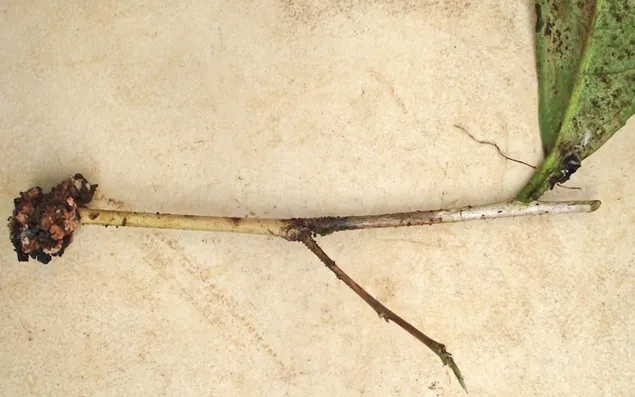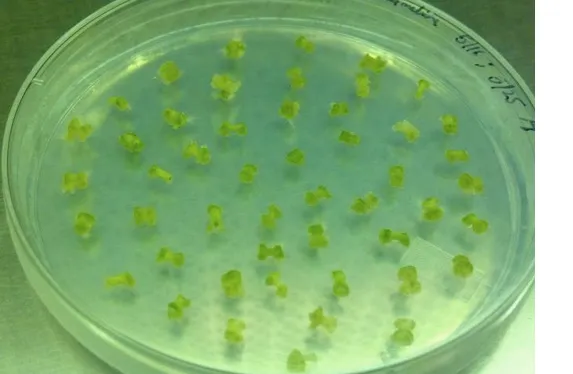
Vegetative plant propagation
Plant propagation is the process of increasing the number of plants of a particular species or cultivar. Propagation can be via sexual or asexual means. Over the years, horticulturalists have developed asexual propagation methods that use vegetative plant parts. This allows plants to be created in ways that nature cannot duplicate. Asexual or vegetative plant propagation
Asexual plant propagation methods produce new plants from vegetative parts of the original plant, such as the leaves, stems and roots. These methods are generally referred to as vegetative propagation. Many plants can reproduce this way naturally, but vegetative propagation can also be artificially induced.
Advantages of vegetative propagation
The main advantage of vegetative propagation methods is that the new plants contain the genetic material of only one parent, so they are essentially clones of the parent plant. This means that, once you have a plant with desirable traits, you can reproduce the same traits indefinitely, as long as the growing conditions remain similar. This is especially important for commercial growers who want to reproduce the highest-quality plants and ensure consistency of a variety of plant or crop for sale. This can also help to maintain consistent quality and taste in products made from plants or crops. For example, in Zealong’s tea plantation, they propagate new tea plants using cuttings to ensure consistency in the taste and quality of their tea.
With vegetative propagation, plants also bypass the immature seedling phase and therefore reach the mature phase sooner. This can save a lot of time and money for commercial plant production. For example, it takes 3–4 years for a tea plant to grow big enough (from a cutting) to be ready for harvesting and processing into tea. Growing from seed would take even longer.
Image: Scientists discuss new apple variety

Disadvantages of vegetative propagation
The main disadvantage is the potential to impact on biodiversity of a species. Also, if a particular plant clone is susceptible to certain diseases, there is potential to lose entire crops, such as the impact of kiwifruit disease Psa. One way to protect against these problems is to establish a genetic bank of seeds or plants (a germplasm collection), which is common practice in various cropral sectors.
Image: Germplasm collection

Germplasm collection
The apple germplasm collection at Plant & Food Research includes apples of all sizes, shapes and colours, including red-fleshed varieties.
The apple germplasm collection
A collection of apple genetic resources, known as a germplasm collection, is maintained at the Plant & Food Research (PFR) Hawke’s Bay orchard to provide a source of new apple traits for the future. Find out more in this article: The germplasm collection: a library of apple.
Natural vegetative propagation
Natural vegetative propagation occurs when an axillary bud grows into a lateral shoot and develops its own roots (also known as adventitious roots). Plant structures allowing natural vegetative propagation include bulbs, rhizomes, stolons and tubers.
Bulbs
Bulbs, such as daffodils, form lateral buds from the base of the mother bulb, which produce new smaller bulbs or bulbels in subsequent years.

Bulbs
Bulbs form lateral buds from the base of the mother bulb, which produce new smaller bulbs or bulbels in subsequent years.
Rhizomes
Rhizomes are root-like stems that grow horizontally under the ground. New roots and shoots form at the nodes with shoots growing upwards to form new plantlets. Lateral buds grow out to form new rhizomes. Examples include iris and root ginger.

Rhizome diagram
Rhizomes are root-like stems that grow horizontally under the ground. New roots and shoots form at the nodes with shoots growing upwards to form new plantlets.
Stolons
Stolons or runners are horizontal stems that grow above the ground, for example, strawberries. Tiny plantlets form along the stolon, and roots form where they touch the ground. When the connection with the parent plant breaks, the new plant becomes independent.

Stolons
Stolons are horizontal stems that grow above the ground. Tiny plantlets form along the stolon and roots form where they touch the ground.
Tubers
Tubers are swollen portions of an underground stem that store food so a plant can lie dormant over the winter, for example, potatoes. Axillary buds, commonly known as ‘eyes’, form over the surface of the tuber and produce shoots that grow into a new plant the following year.

Tubers
Tubers are swollen portions of an underground stem that store food so a plant can lie dormant over the winter, for example, potatoes, kumara and taewa.
Artificial vegetative propagation
Horticulturalists and gardeners also use vegetative propagation methods that plants don’t use naturally. These methods involve taking a piece of one parent plant and causing it to regenerate itself into a new plant.
Common methods include cuttings, grafting and budding, and tissue culture.
Cuttings
A cutting is a piece that has been cut off a mother plant and then caused to grow into a whole plant. Often this involves a piece of stem that is treated with hormones to encourage new roots to form before planting. Sometimes root cuttings with buds on them will produce new shoots when pressed directly into soil.

Grafting and budding
This method involves joining a stem piece (as in grafting) or a single bud (as in budding) onto the stem of a plant that has roots. The stem piece or bud is called the scion, and the plant with roots is called the rootstock. Grafting is commonly used to produce fruit trees sometimes with more than one variety of the same fruit species growing from the same stem.
Grafting and budding
Grafting and budding
Grafting and budding are standard techniques used to propagate new fruit cultivars. These techniques allow breeders to grow multiple plants of exactly the same genetic material (clones).
Grafting and budding are standard techniques used for propagating new apple cultivars. In this video, Richard Volz of Plant & Food Research (PFR) explains how these techniques are carried out at the PFR Hawke’s Bay orchard.
Grafting and budding
Grafting and budding are standard techniques used for propagating new apple varieties. Richard Volz of Plant & Food Research explains how these techniques are carried out.
Tissue culture
Using tissue culture, sometimes called micropropagation, tiny fragments of plants are treated with plant hormones in a sterile growing medium. The hormones stimulate the growth of a callus, from which a new seedling can grow. This method is used to produce large numbers of identical seedlings.
In the interactive Making a transgenic plant, the third step shows how transgenic plantlets are developed in the lab using tissue culture and then grafted onto rootstock.
